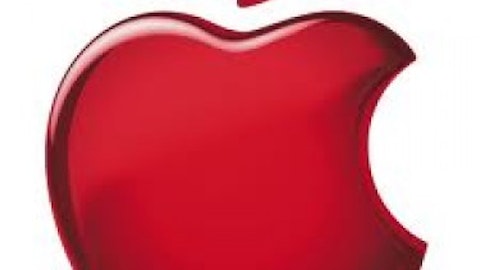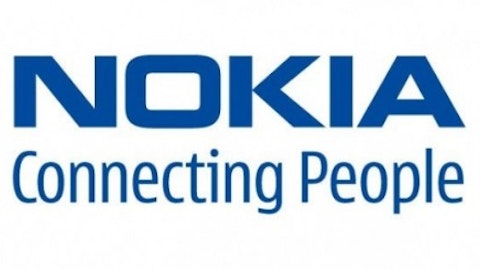
But, what if I told you that it’s not too late to invest in the rise of smartphones and other mobile devices like tablet computers? Although it may seem like the ship has sailed now that the United States is becoming saturated, the rest of the world is still out there. What worldwide mobile trends can benefit investment decisions right now?
What we can learn from BlackBerry
Investors were pumped when Research In Motion Ltd (NASDAQ:BBRY) announced a new operating system to go along with the highly anticipated Research In Motion Ltd (NASDAQ:BBRY) Z10. The bulls in their charge were all agreed: these two products were going to impart new life into a struggling company. But now a few months later, the jury is out.
Several independent reports have come out about the BlackBerry Z10 that indicate there is very weak demand for this phone. One report by Detwiler Fenton & Co claims more people return the Z10 than keep it. Research In Motion Ltd (NASDAQ:BBRY) denies this, but we’ll have to wait until the first-quarter earnings release to really know what has happened.
But whether or not the BlackBerry Z10 is in soft demand in the United States, Research In Motion Ltd (NASDAQ:BBRY) still has the rest of the world. The phone was released in India in February. The Z10 rolled out in Venezuela in March, and has continued across South America until most recently arriving in Paraguay just last week.
Looking at smartphone — or tablet — sales from just the United States is a very near-sighted perspective. The Z10 hasn’t been as strong as hoped in America, but globally, the company still has some swagger and this device could score big.
Amazon’s part
At a hyper press event, Amazon.com, Inc. (NASDAQ:AMZN) released its Kindle Fire tablet to take on Apple Inc. (NASDAQ:AAPL)’s iPad. One of the biggest advantage that the Fire has over the iPad is the price — priced around $300 less than the iPad. In September 2011 at the Kindle Fire launch, CEO Jeff Bezos memorably said “we’re going to sell many millions of these.”
The truth is, we aren’t really sure. Amazon.com, Inc. (NASDAQ:AMZN) doesn’t tell you how many it sold. But estimates for the initial Kindle Fire come in at 5 million devices. Since the initial launch, Amazon has released two other tablets — the Kindle Fire HD and the Kindle Fire HD 8.9″.
Amazon is about to kick Kindle Fire sales into overdrive. Up until now, Kindle HD sales have been mostly in the United States, Japan, and Europe. But on March 23, the company announced it was rolling out the HD into 170 countries.
What this means for Apple and Samsung
Apple Inc. (NASDAQ:AAPL) has been “struggling” worldwide for some time now. The company’s products are high-end, and have high-end prices. While some in the United States have expendable income to “splurge” on a product from Apple Inc. (NASDAQ:AAPL), people in other countries may not have this luxury.
Consider the following data from the International Monetary Fund.
The United States population averages almost $50,000 in purchasing power, while China’s average is just over $9,000 and India’s is just under $4,000. There just isn’t as much money to go around in other countries around the world, making the price of a phone or tablet carries a very relevant statistic.
According to a Nokia Siemens Network study, 3G mobile usage grew 196% in India in 2012. Similarly, China’s 3G mobile usage has grown from nothing in late 2009, to over 230 million users at the end of last year.
So, mobile growth is exploding in these two countries — and in many other places around the world — but there just isn’t the expendable income available like in the USA to use on certain mobile devices. That is why companies like Nokia Corporation (ADR) (NYSE:NOK) and Amazon with their lower prices may challenge Apple worldwide .
Nokia is attempting to cash in by offering lower priced phones. The company has just launched its smartphone, the Lumia 720, in India for about $318 as a starting price in local currency. Nokia Corporation (ADR) (NYSE:NOK) also has many other — even more affordable — phone models than just the Lumia, only increasing its pricing appeal.
The company that has even more to lose than Apple worldwide is Samsung. As of last quarter, Samsung sold twice as many smartphones as Apple. Samsung has done this by offering many different device options, as opposed to Apple’s one iPhone and one iPad. Yet, Samsung’s products are similarly priced to Apple, and will continue to feel the heat from lower-priced competitors.
Foolish takeaway
Going forward, Apple Inc. (NASDAQ:AAPL) and Samsung are going to have an increasingly difficult time gaining market share in countries where pricing matters. As we have seen, even in an economic power like China, or in an emerging economy like India, the majority of the population still have a hard time making luxury purchases. But mobile usage is growing at an enormous rate. Companies like Nokia and Amazon that offer cheaper options should gain significant market share.
This a catch-22 for Amazon. The company is thought to be selling its Fire tablets almost at cost to make it competitive. That, unfortunately, doesn’t grow Amazon’s bottom line no matter how many tablets it sells, although this does drive customers to Amazon’s store. Revenue has grown nearly 50% since the first tablet launch, and I expect revenue to explode now that Amazon will be selling its tablet around the world. An important question to ask is: Will Amazon ever turn increased revenue into increased net income?
Really, I think that Nokia is one of the best positioned companies to take advantage of worldwide mobile growth due to its competitive pricing. Its profit margin isn’t as high as Apple’s, but I believe the quantity of smartphones sold in coming quarters will compensate and return a decent profit for the company.
The article 1 Global Trend You Need to Know originally appeared on Fool.com and is written by Jon Quast.
Jon is a member of The Motley Fool Blog Network — entries represent the personal opinion of the blogger and are not formally edited.
Copyright © 1995 – 2013 The Motley Fool, LLC. All rights reserved. The Motley Fool has a disclosure policy.



